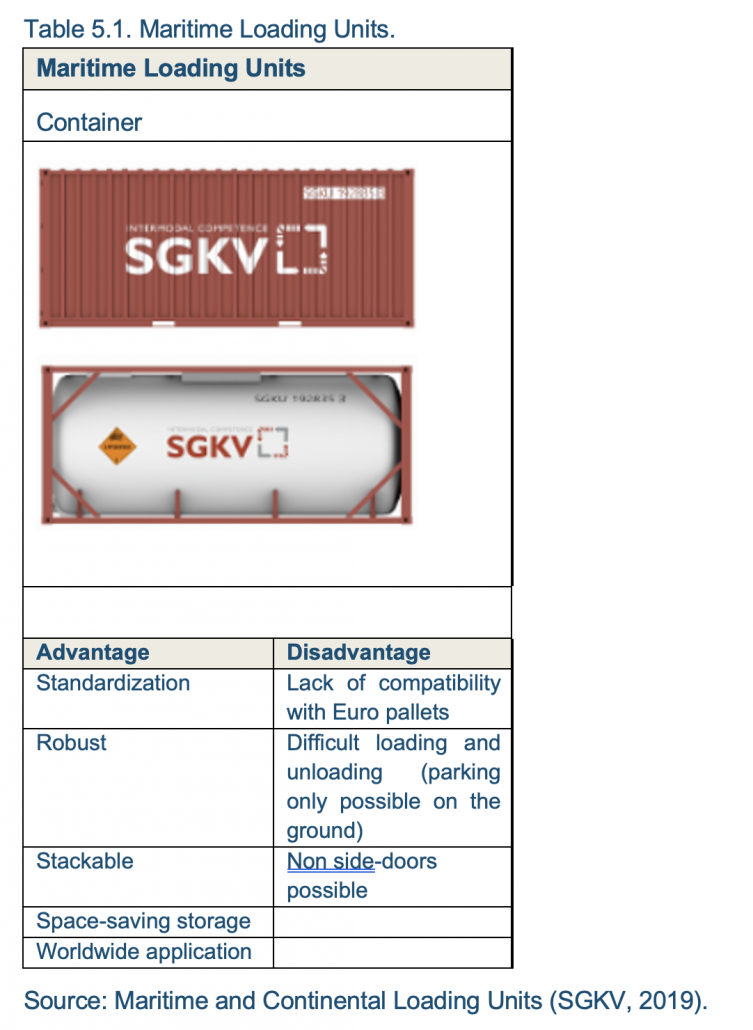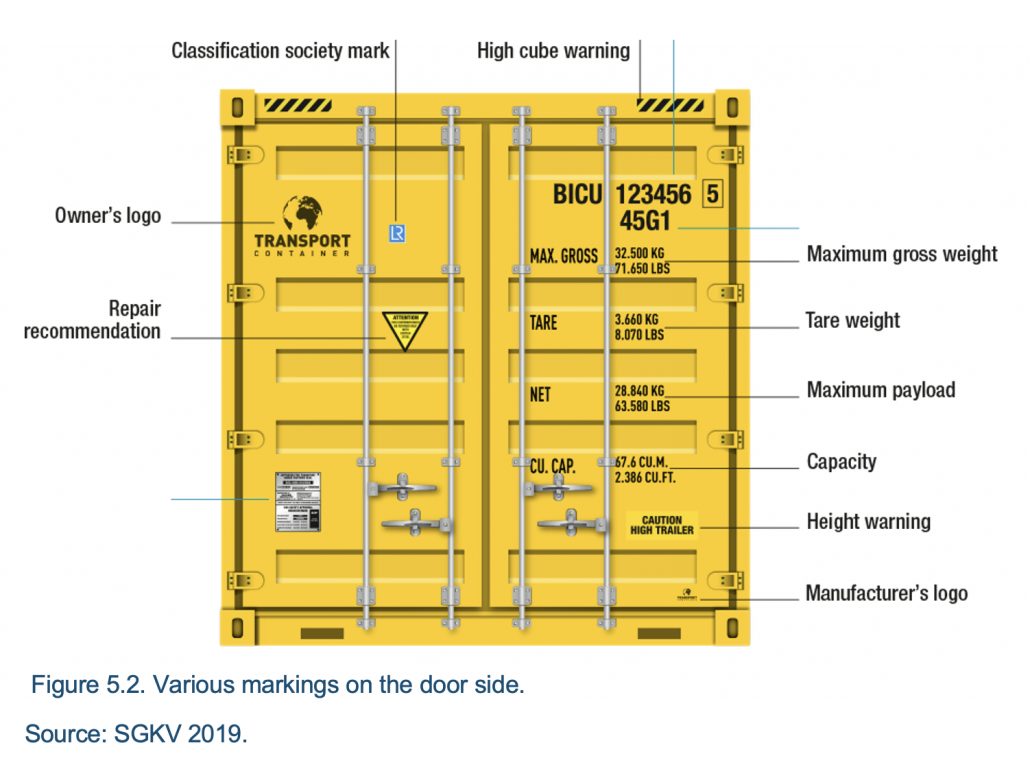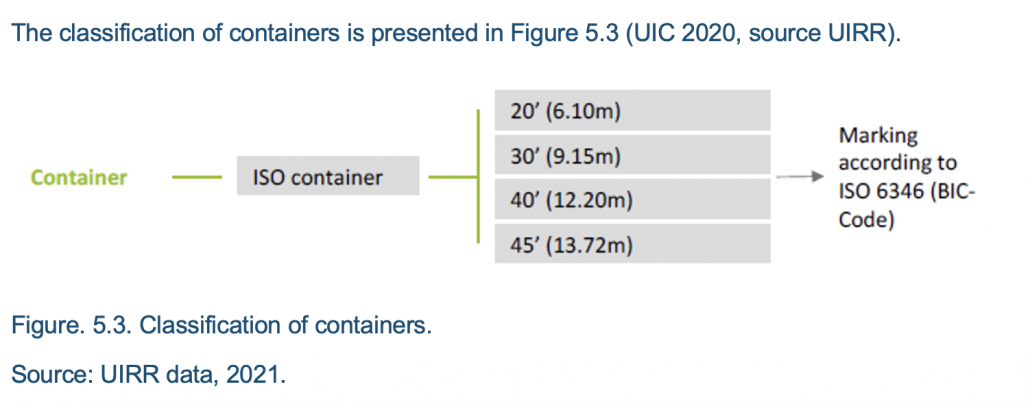In CT, containers represent the most important loading unit, as they can be transported by all means of CT, namely road, rail, and barge. Containers are also used in maritime shipping, which is why hinterland transport in particular can be handled by CT. The standardization of containers makes it easier to switch between modes of transport, as the handling equipment in terminal is geared to standardized dimensions. In CT, mainly 20-foot and 40-foot containers are used (Figure 5.1) (SGKV, 2019).

In the BSR, ISO-containers consist of 40% of used units (following semi-trailers, which account for 58%). It is worth pointing out that when it comes to the European CT market, the ISO-containers account for almost two thirds of the whole market (Table 5.1) (UIC, 2020).

Since containers can be moved by all transport modes, they represent the most important loading units in CT and allow for easy handling between modal systems. Containers are designed to be moved with common handling equipment, thereby enabling high-speed intermodal transfers in economically large units between ships, railcars, truck chassis, and barges using a minimum of labor (SGKV & UIRR, 2020). Containers enable good logistical management of the areas used for loading and unloading goods, since their rigid structure enables them to be stacked in one pile (UIC 2015).
There are different types of containers and the type of container suitable for transport depends on the goods to be transported (Table 5.2, note the pictures (i.e., illustrations by SGKV 2019) represent different kinds of available containers with special features and purposes).

Containers are identified by various markings on the door side containing important information for players along the transport chain to ensure smooth operation (Figure 5.2).

The classification of containers is presented in Figure 5.3 (UIC 2020, source UIRR).

The average technical transport lifetime for ISO-containers is 17.8 years with an average age of 9.3 years (UIC, 2020).